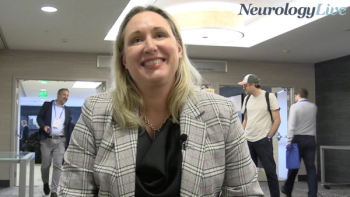
Mechanistic Action and FDA Outlook for Omaveloxolone in Friedreich Ataxia: David R. Lynch, MD, PhD
The professor of neurology at the University of Pennsylvania Perelman School of Medicine discussed whether omaveloxolone’s therapeutic benefit is enough for it to become the first approved therapy for Friedrich ataxia. [WATCH TIME: 2 minutes]
WATCH TIME: 2 minutes
"Theoretically, it should have some benefit on all aspects of the disease, and perhaps more importantly, for at least some period of time [it can] slow the progression, which is what the delayed-start study showed.”
Friedreich ataxia (FA) is a rare inherited disease that causes progressive nervous system damage and movement problems. It is caused by a defect in the FXN gene, which carries the genetic code for the frataxin protein. Although rare, FA is the most common form of hereditary ataxia in the United States, affecting about 1 in every 50,000 people. As is the case for many neurodegenerative diseases, there is currently no cure or effective treatment for FA.1
One such investigational drug, omaveloxolone (Reata Pharmaceuticals), has shown potential to become the first approved therapy for this patient population.
After a preliminary review of briefing materials for an upcoming Type C meeting, the FDA told Reata that a pre-NDA meeting is the most appropriate format for a discussion of the development program for omaveloxolone in FA.3 The company announced in May that it plans to follow the FDA’s request to withdraw the current request for a Type C meeting and submit a request for a pre-NDA meeting as soon as practicable.
In an interview with NeurologyLive, Lynch discussed why the mechanistic action of omaveloxolone makes it so effective to treat these patients and whether it has legitimate potential to break through the treatment landscape.
REFERENCES
1. Friedrich ataxia fact sheet. National Institutes of Health. https://www.ninds.nih.gov/Disorders/Patient-Caregiver-Education/Fact-Sheets/Friedreichs-Ataxia-Fact-Sheet . Updated March 3, 2020. Accessed September 24, 2021.
2. Lynch DR, Chin MP, Boesch S, et al. Efficacy of omaveloxolone in patients with Friedrich’s ataxia: delayed-start study. Presented at MDS Virtual Congress; September 17-22, 2021. Poster LBA 2.
3. Reata announces that the FDA has asked the company to request a pre-NDA meeting for omaveloxolone for the treatment of Friedrich’s Ataxia. News release. Reata Pharmaceutical. May 19, 2021. Accessed September 24, 2021. https://www.globenewswire.com/en/news-release/2021/05/19/2232302/0/en/Reata-Announces-that-The-FDA-Has-Asked-The-Company-to-Request-a-Pre-NDA-Meeting-for-Omaveloxolone-for-the-Treatment-of-Friedreich-s-Ataxia.html
Newsletter
Keep your finger on the pulse of neurology—subscribe to NeurologyLive for expert interviews, new data, and breakthrough treatment updates.




































